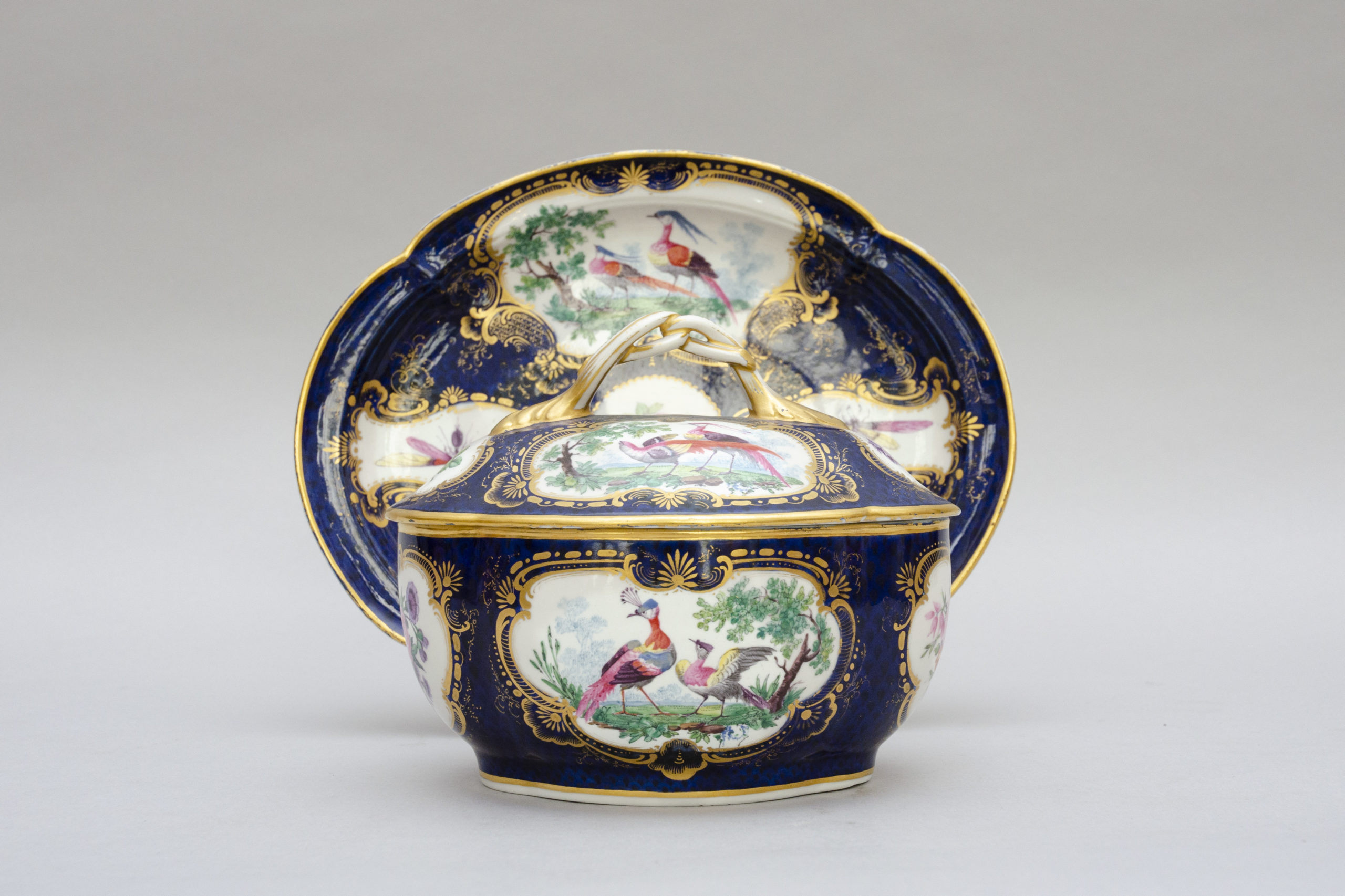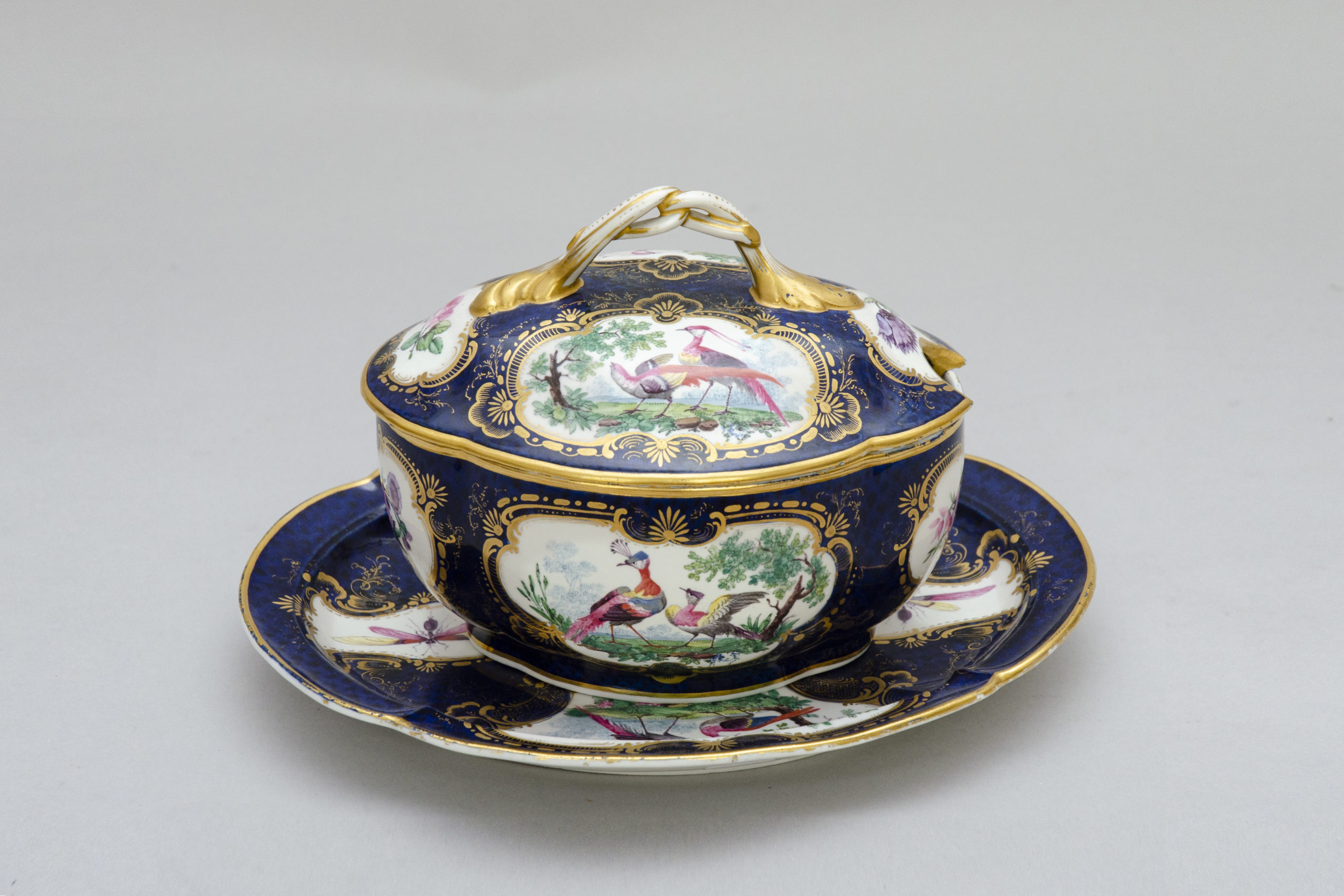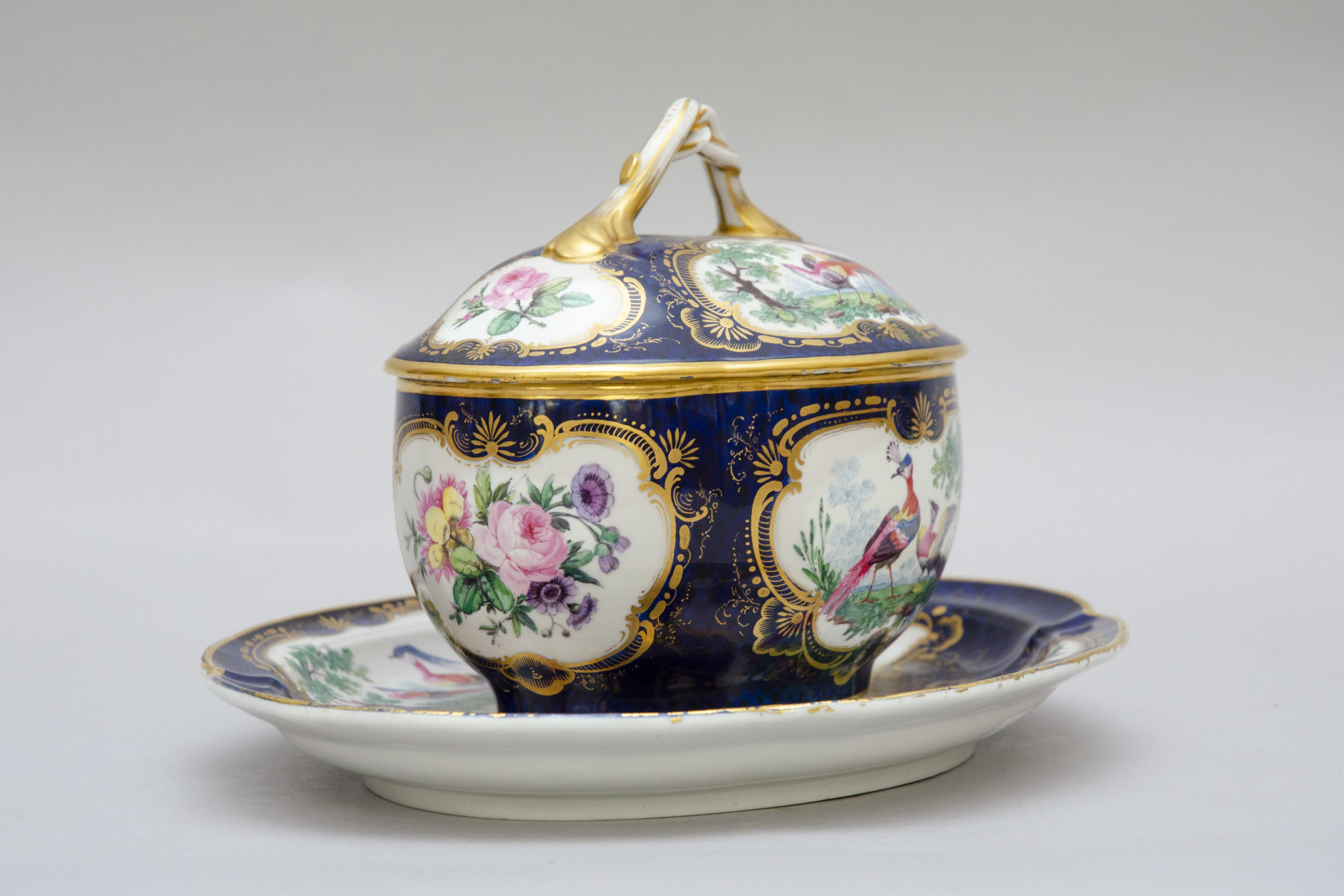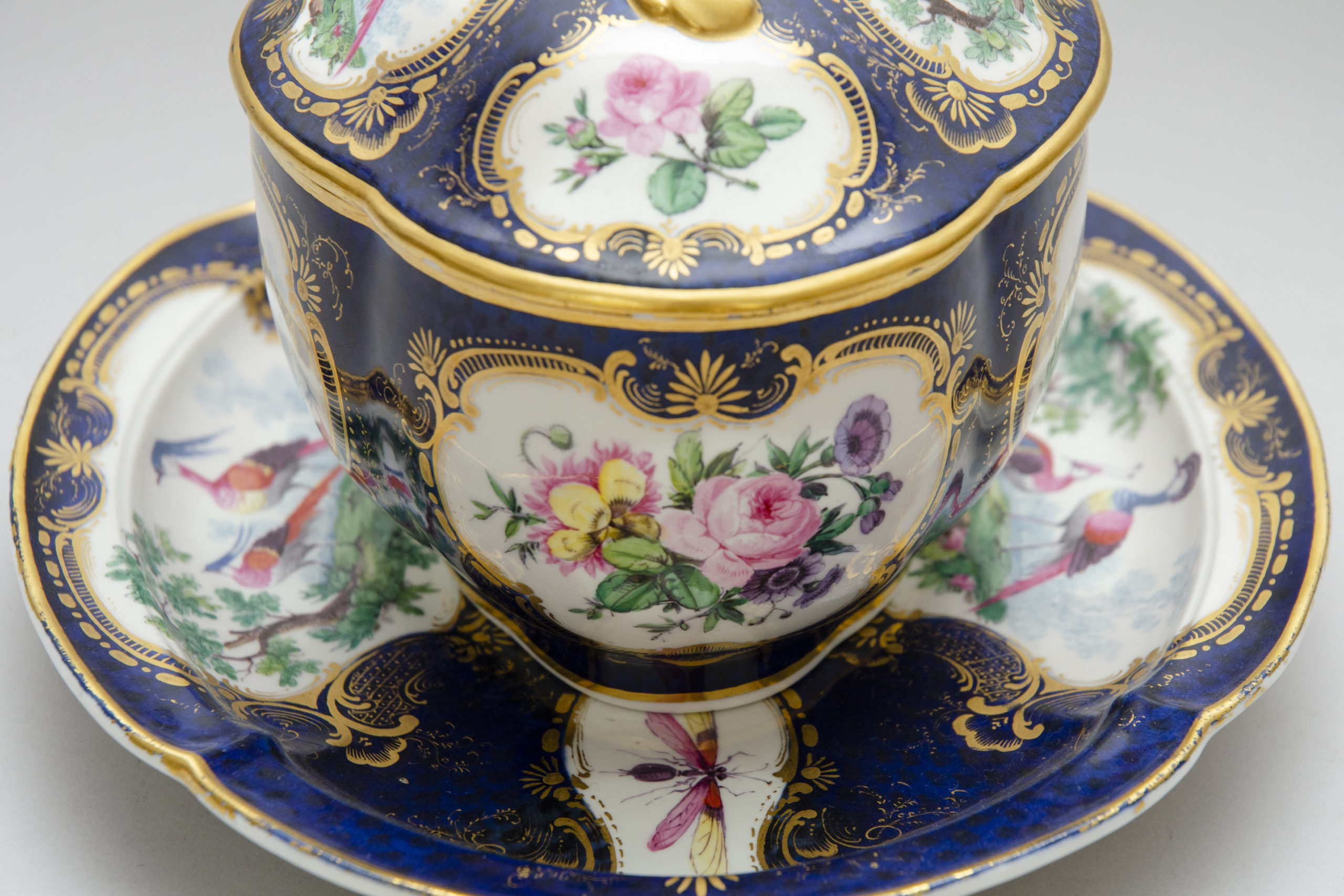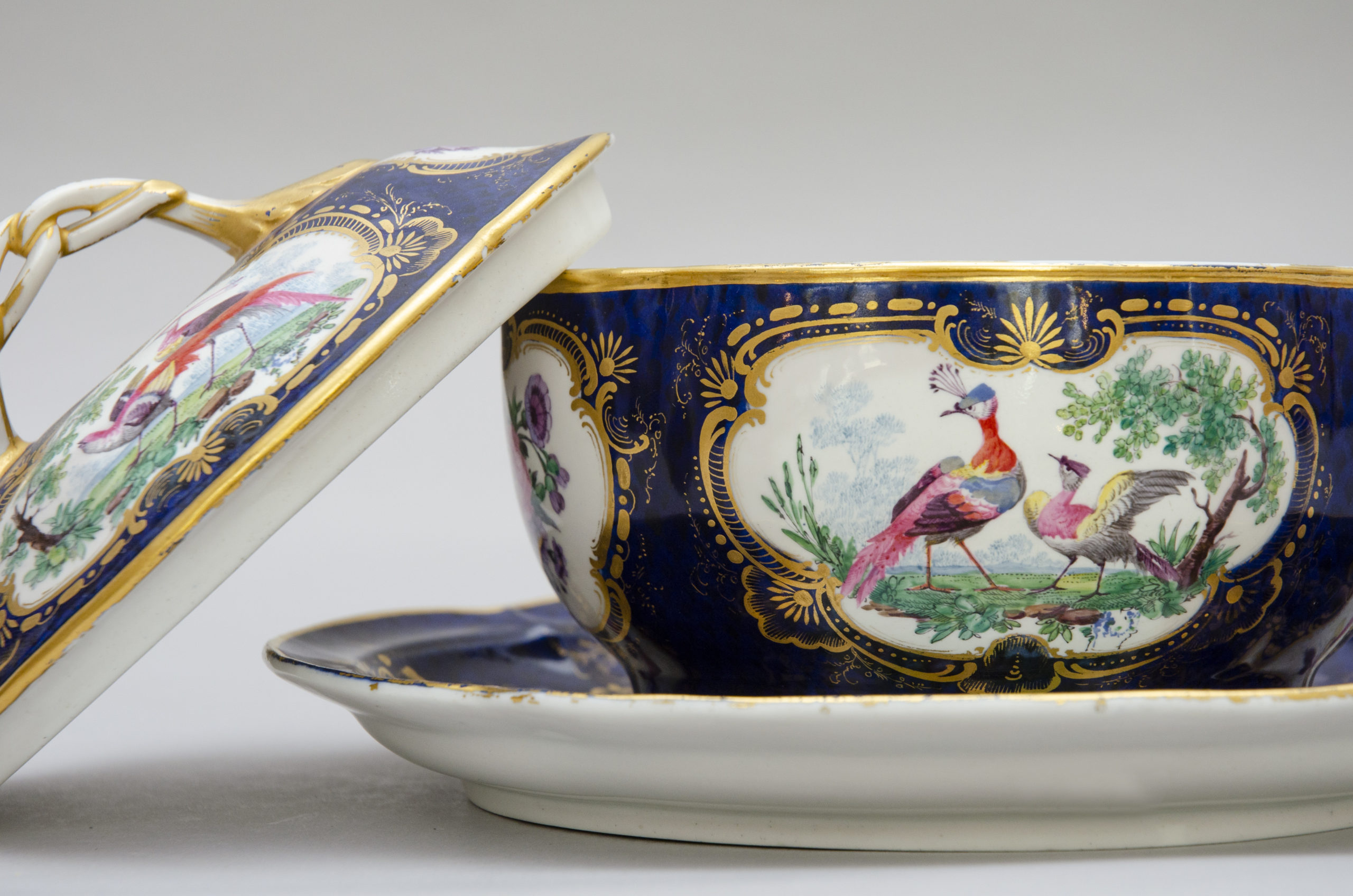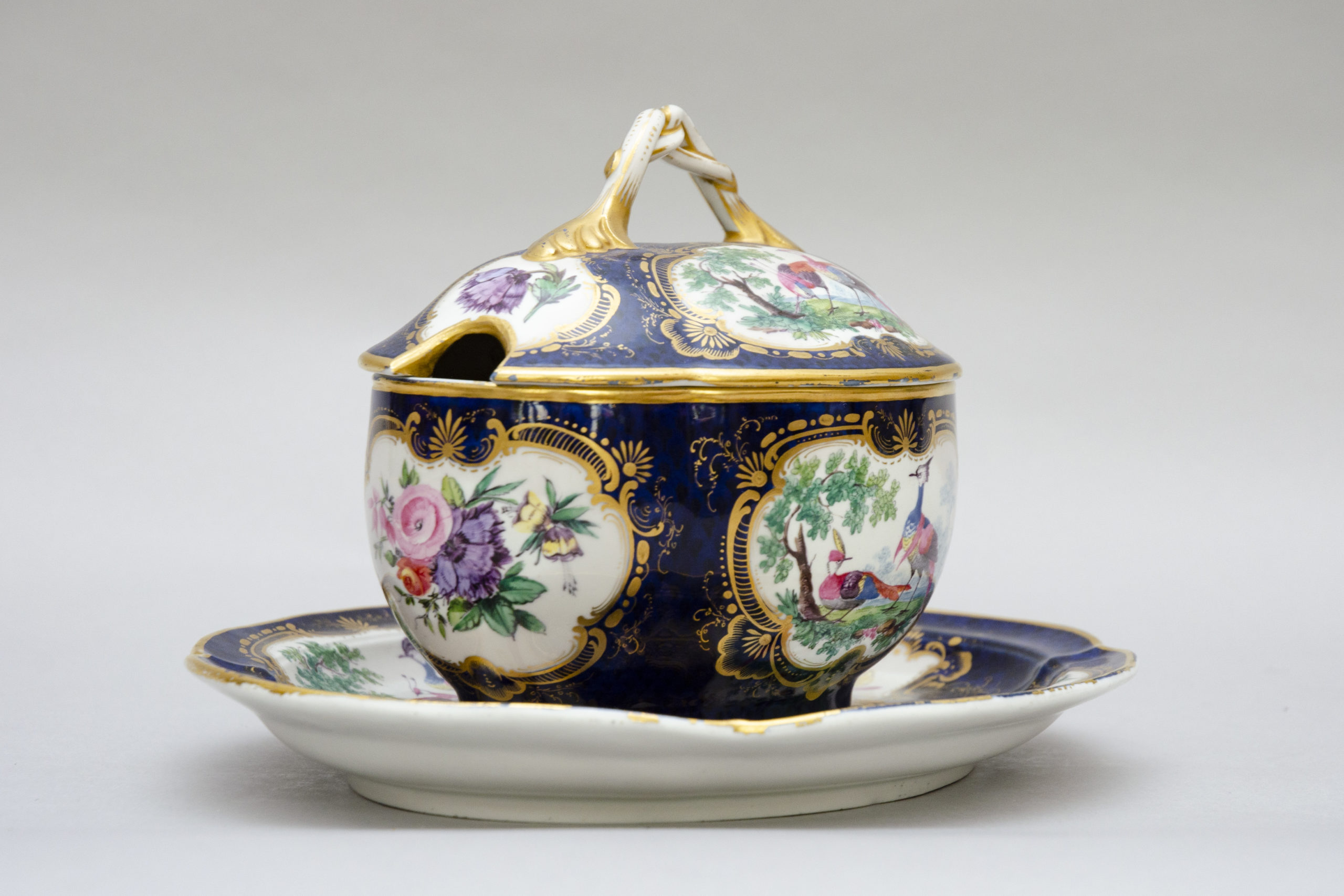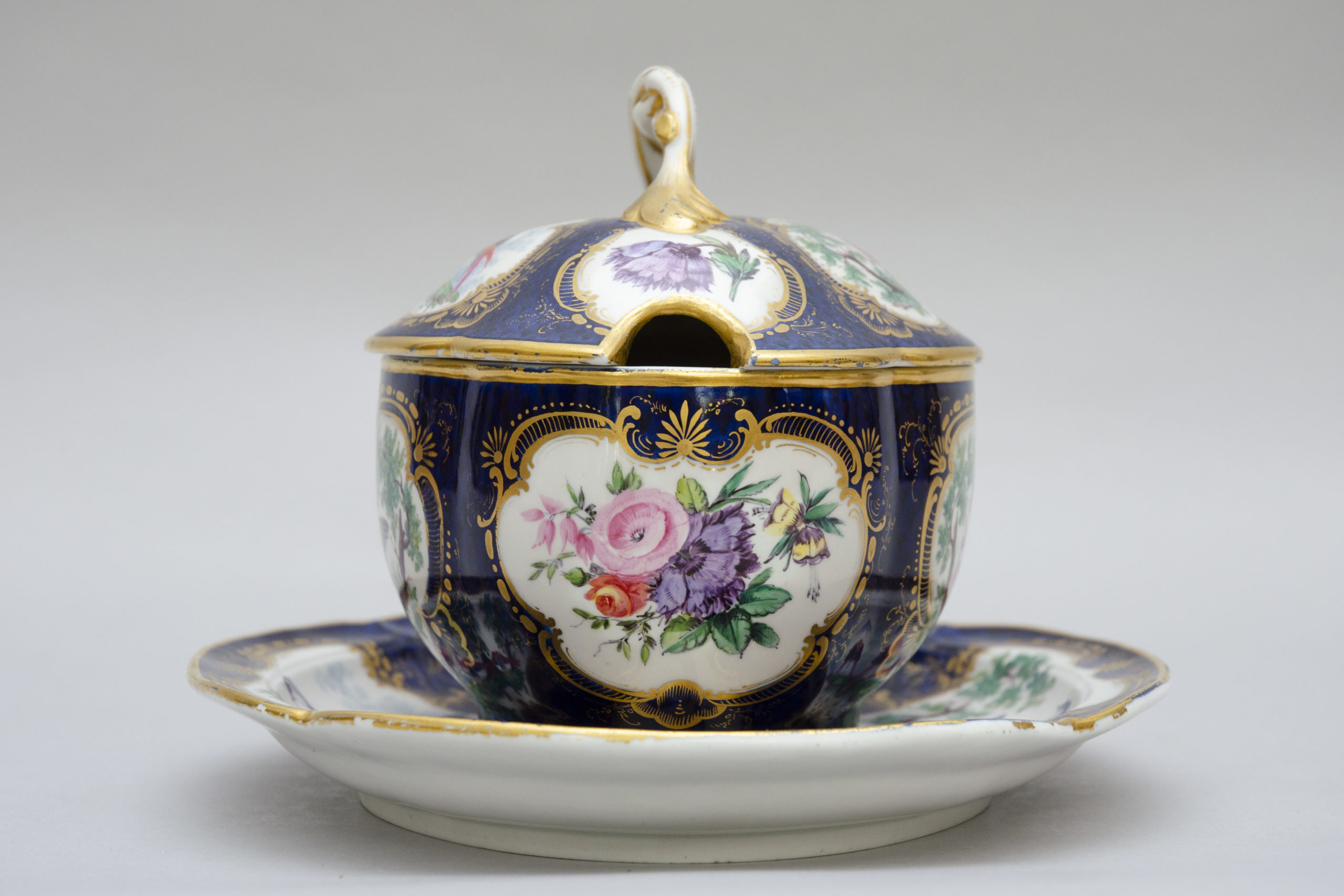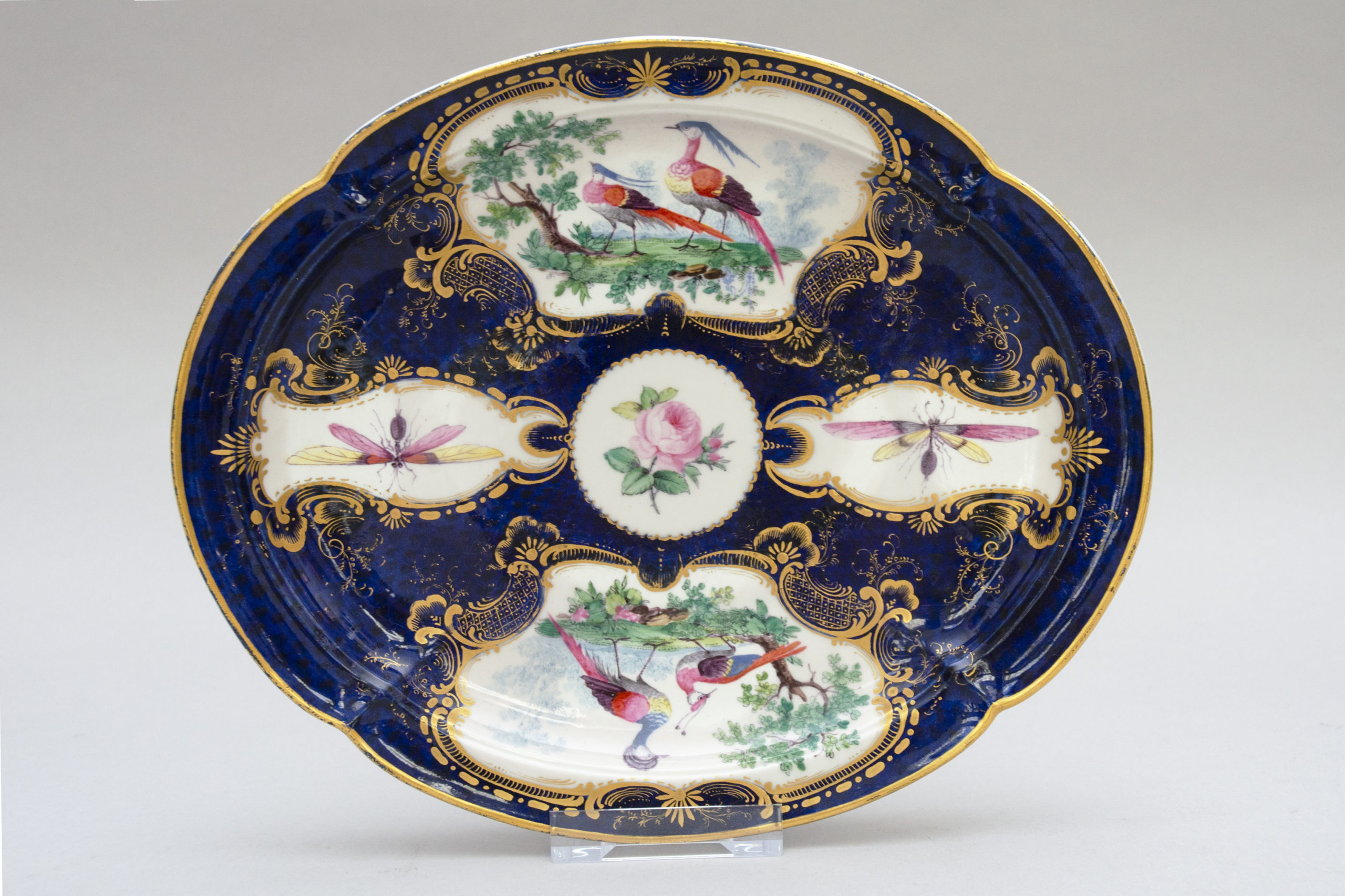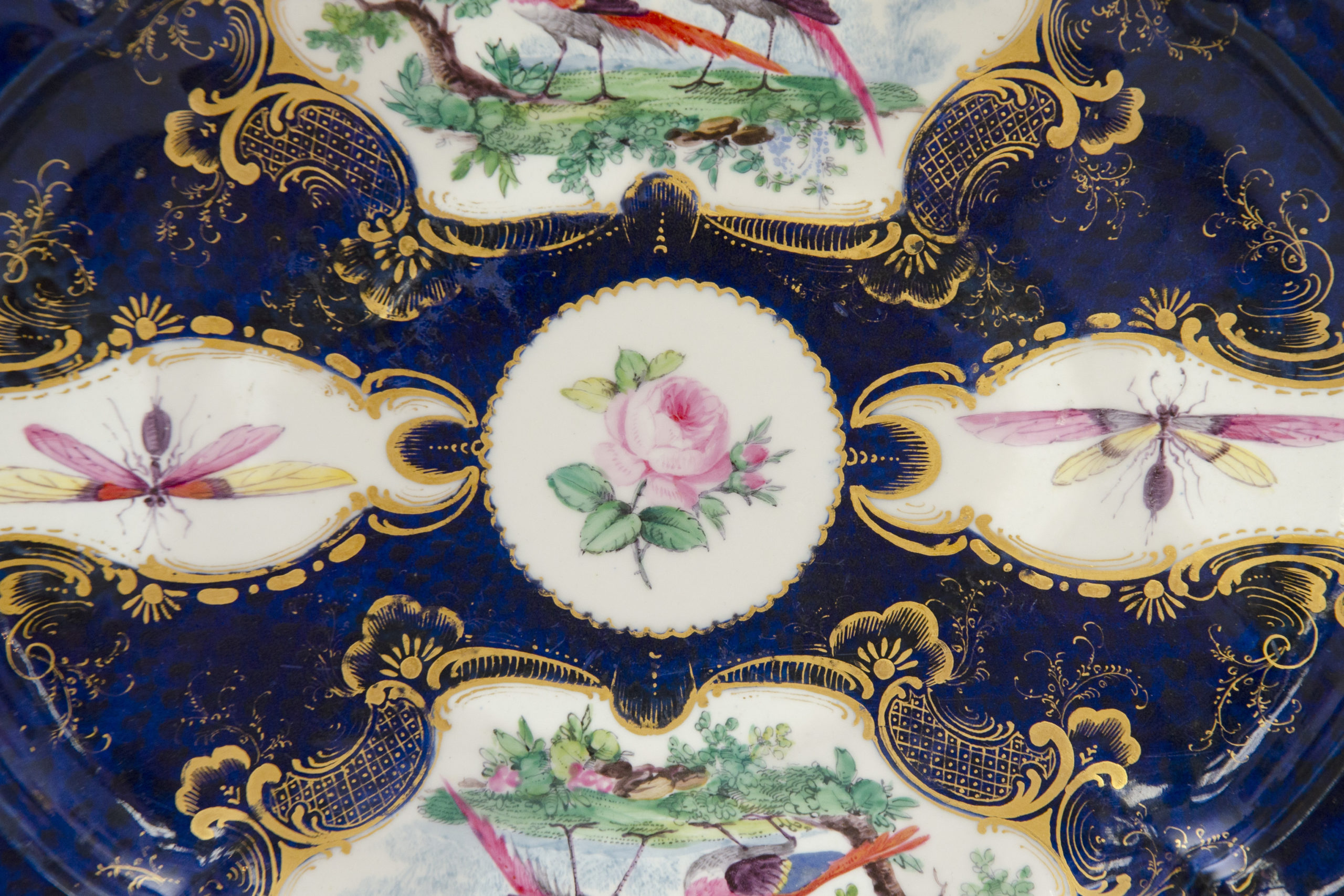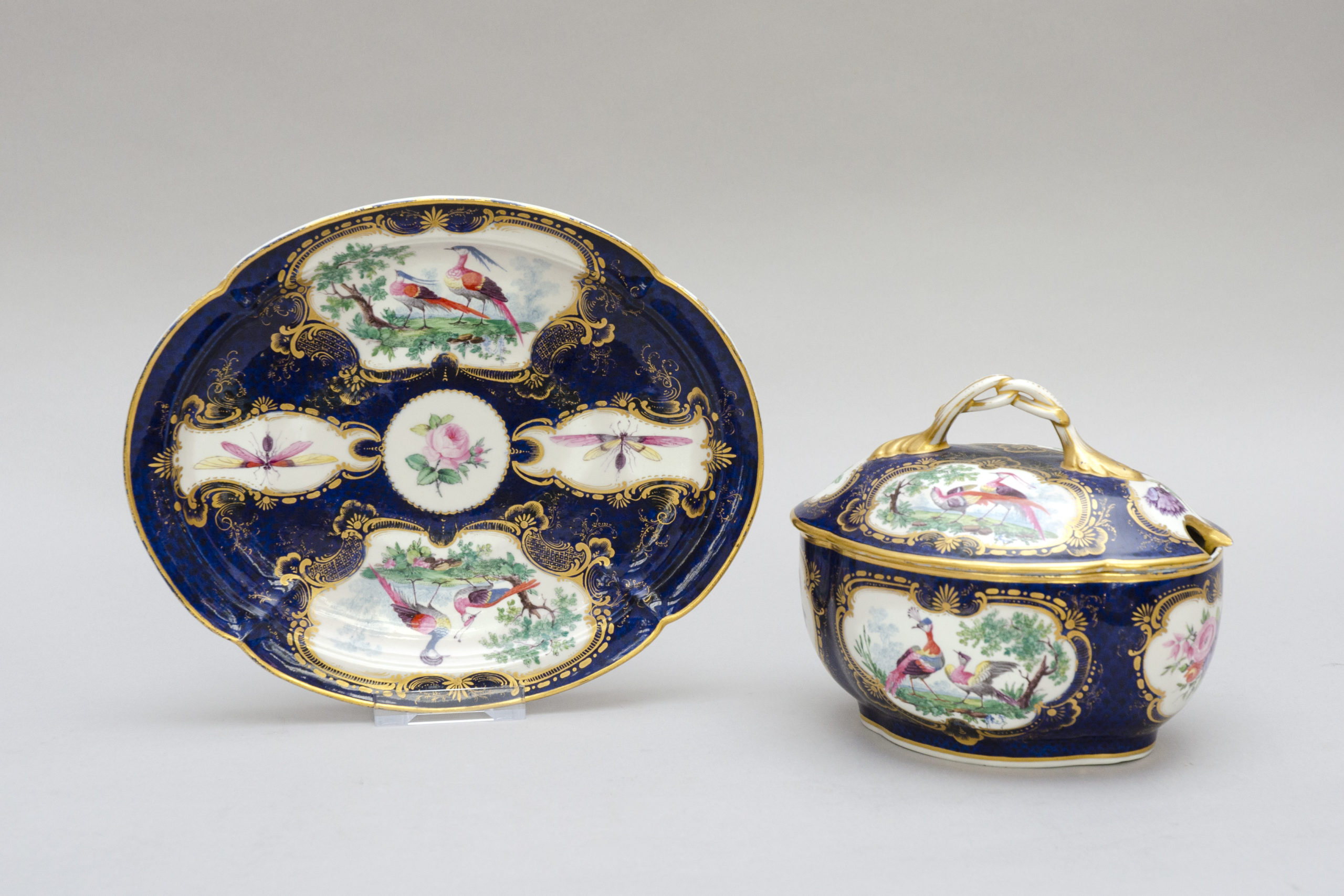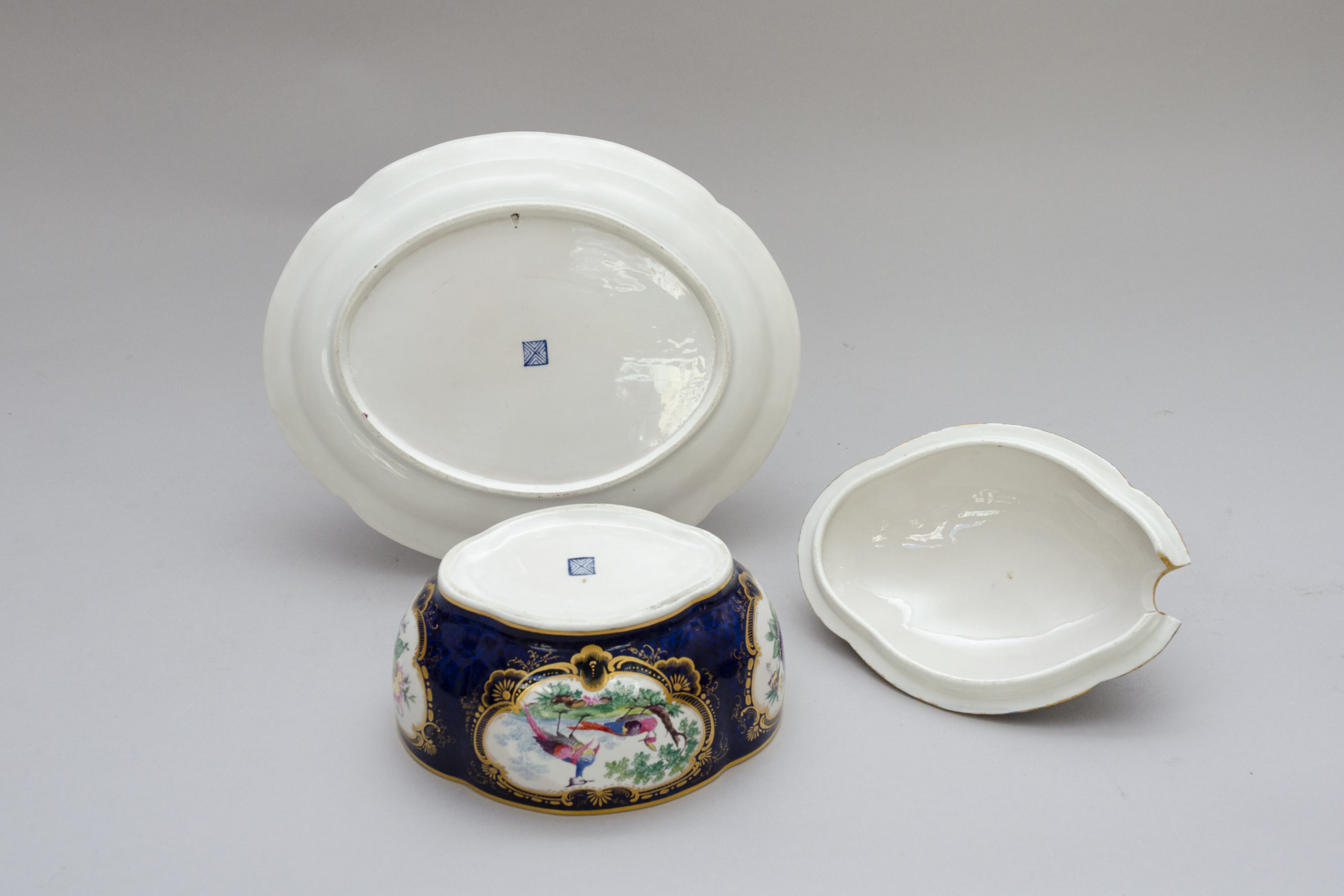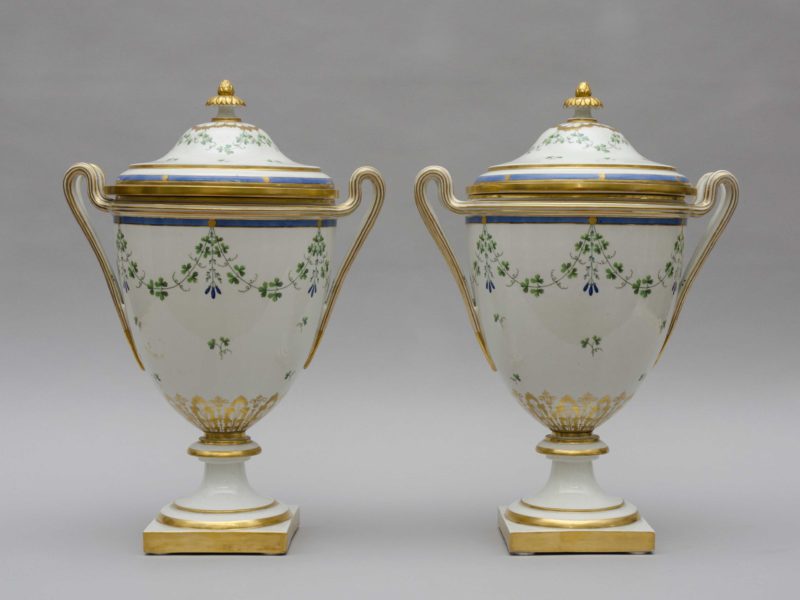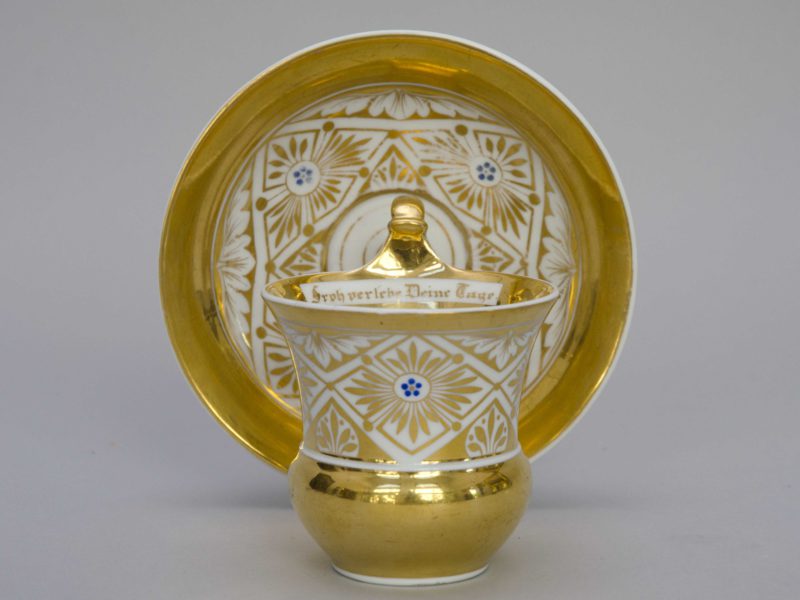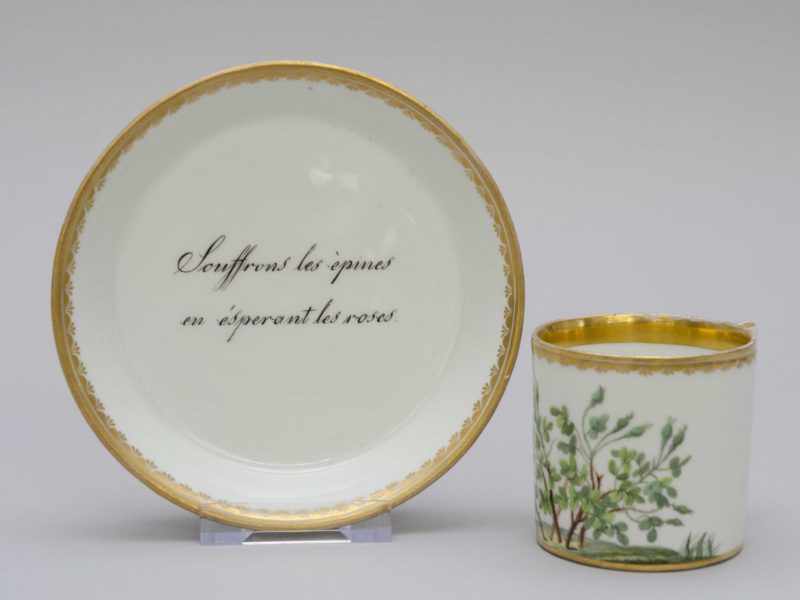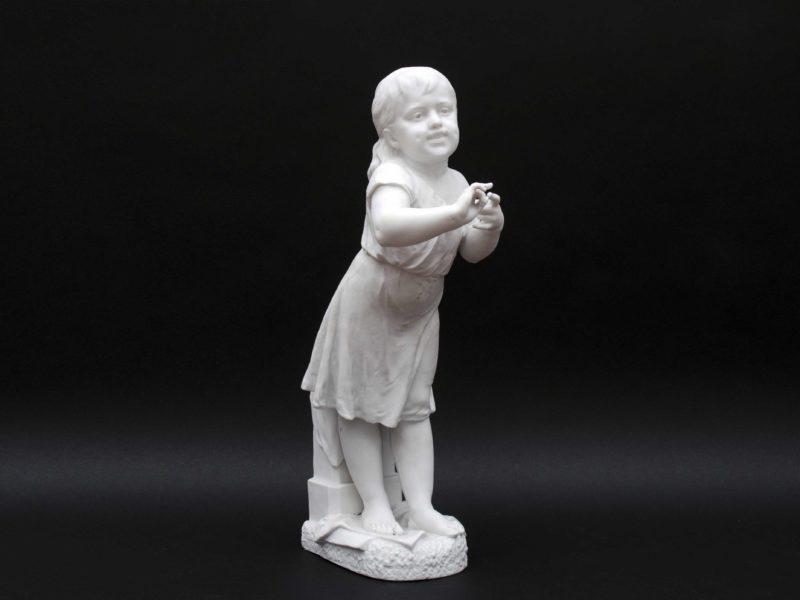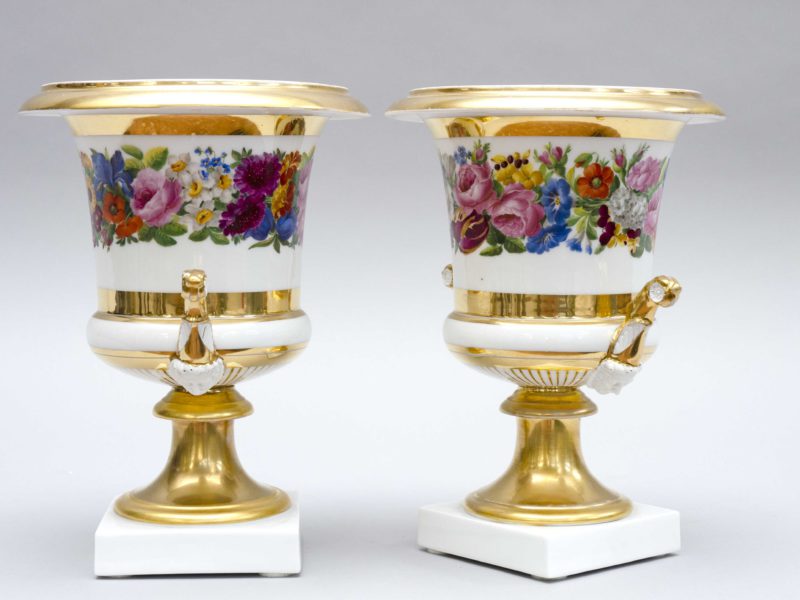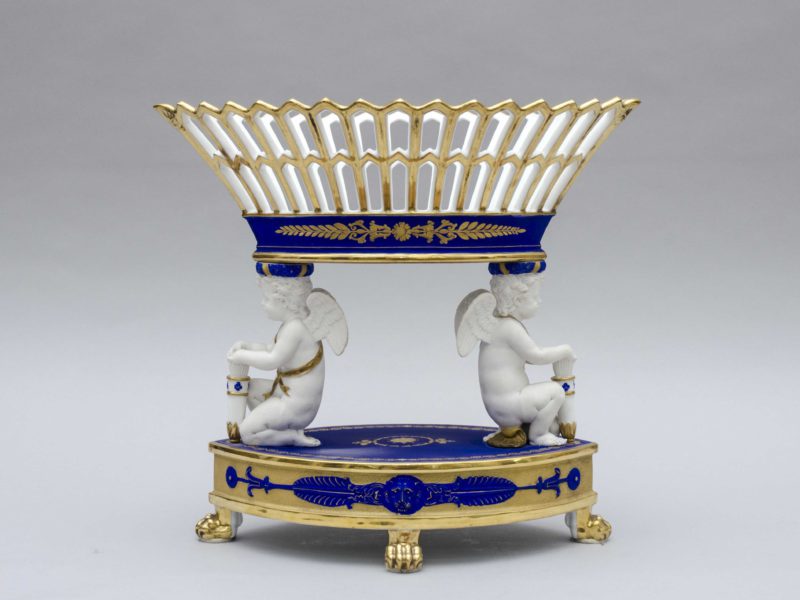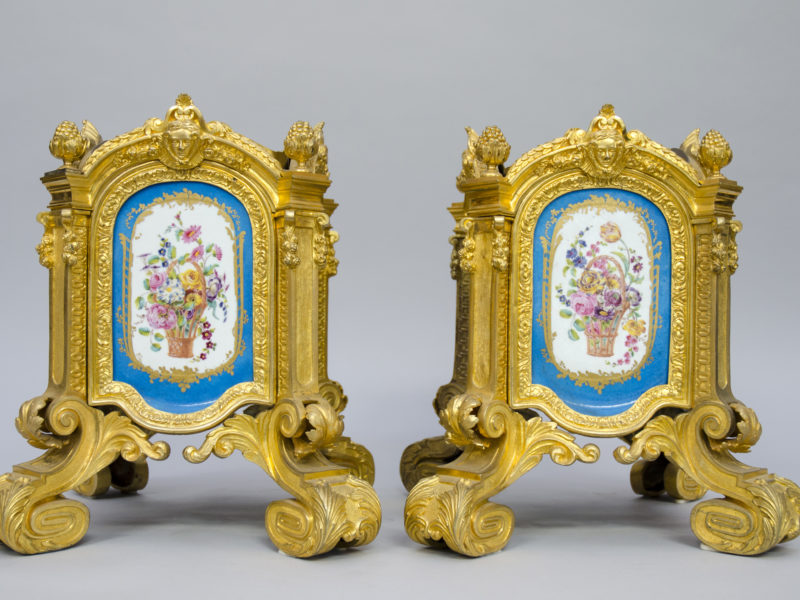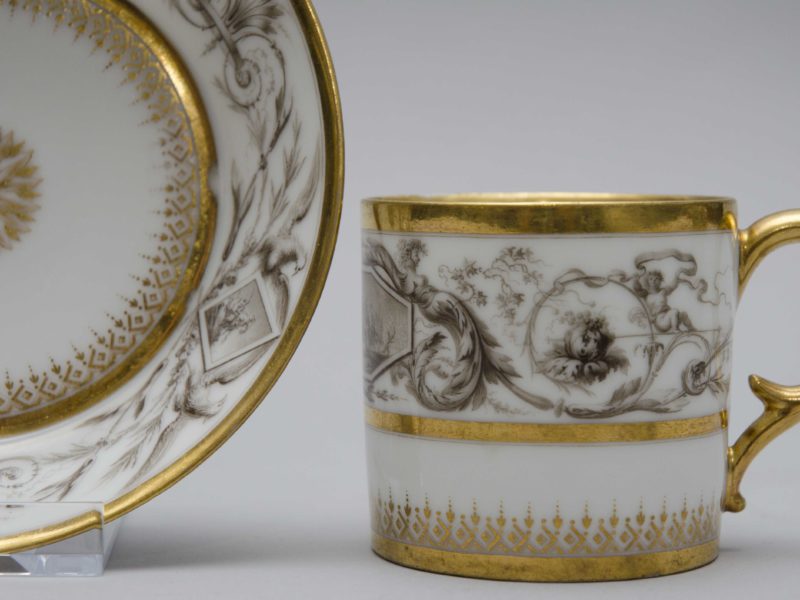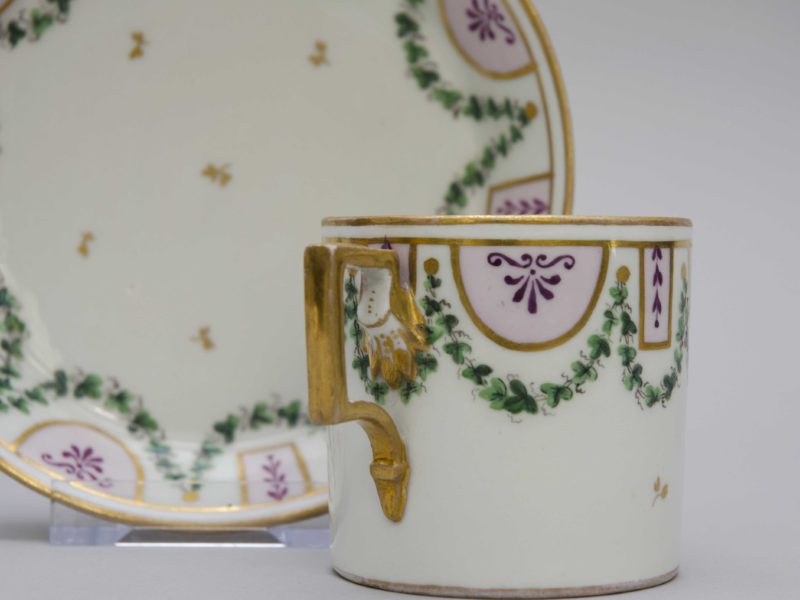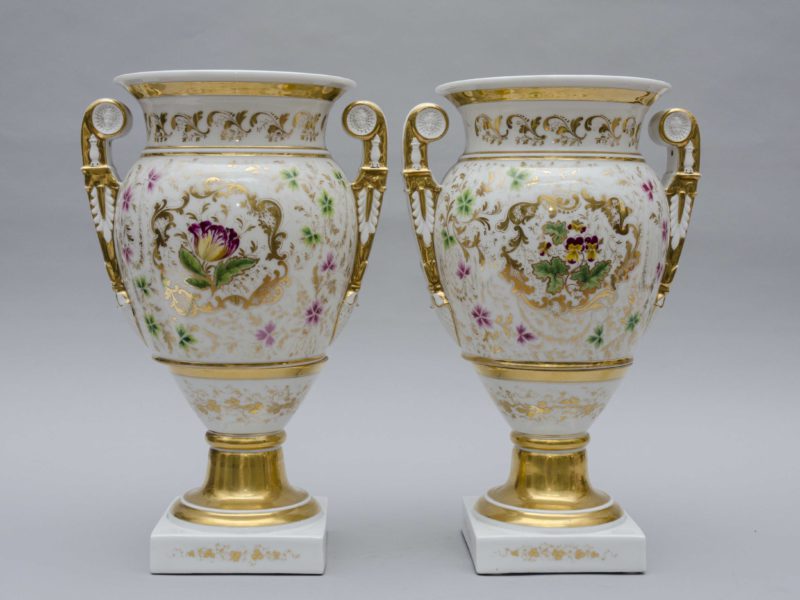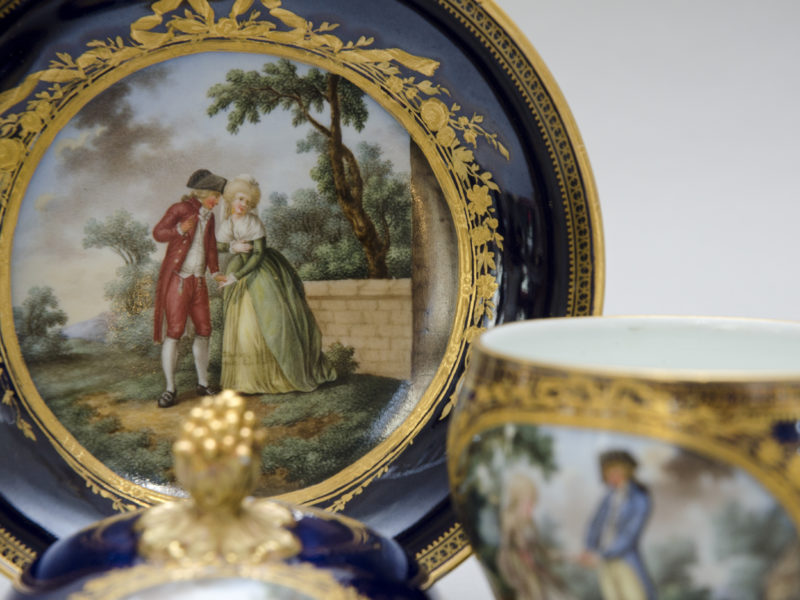
Stunning covered sauce tureen on stand, Worcester
Out of stock
Rare sauce tureen with cover and stand. Powder blue ground with reserve of exotic birds surrounded by rocaille gilt scrolls in the manner of Sèvres porcelain. Soft paste porcelain, rare first period mark. Great condition, some loss in the gold. A collector’s piece.
Size: stand is W 23cm x D 19cm – the tureen is H 12 cm with the cover
Worcester porcelain, 1751-1783, the First Period or the Dr Wall period after one of the original partners, Dr John Wall.
Lit : Doctor John Wall, during the year 1750, conducted experiments with an apothecary William Davis, at Davis’s shop in Broad Street, Worcester to devise a new method of making porcelain using soapstone. They were determined to emulate the ancient Chinese production of fine translucent porcelain, but the formula for mixing the clays was unknown. Using a primitive domestic oven, they began to experiment. Founded in 1751 the factory’s origins were humble. With 13 local businessmen Wall and Davis advanced their discovery in “The Worcester Tonquin Manufactory” at Warmstry House. Eventually their recipe for soft porcelain would withstand boiling water: a discovery that led to the fame of the Wall’s porcelain. Similar to Bow and Chelsea china, the glaze was harder and thinner, with a blue underglaze.
The First Period of Royal Worcester (1751-83) is often called the Dr. Wall period. In 1756 Robert Hancock joined the company and initiated the transferring of prints onto porcelain. A higher production was thereby obtained, while maintaining the quality. During the 1760s, lots of decorative innovations come in. Alongside painted and printed wares, coloured grounds are extensively used in distinctive shades such as yellow and the scale blue grounds derived from Sevres porcelain. Special decorators were employed whose work can be identified and is sometimes signed, like Jefferyes Hamett O’Neale (famous for his scenes from Aesop’s Fables) or the sizeable proportion of work sent to be decorated outside the factory in London at the studio of James Giles. By this time, Japanese influence on decoration evolved to brightly coloured and richly patterned Imari designs.
In 1783 Thomas Flight bought the factory for his sons Joseph and John and again changed the porcelain paste, achieving a better, whiter body, decorated in neoclassical style. Worcester Porcelain is granted a royal warrant in 1788 by George III (Royal Worcester). In 1914 Royal Worcester added to its decorative ware hard porcelain goods for hospitals and laboratories. In 1976 it merged with Spode and production was switched to factories in Stoke on Trent and abroad. Financial hardships after the Wall Street Crash of 1929 led to the company selling to the Portmeirion Pottery Group in 2009.
Out of stock
Contact us